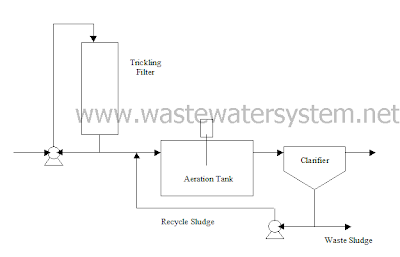The most economical way of treating huge volume of wastewater is by combining different aerobic treatment processes into one consisting of an aeration tank, clarifier and the most important component trickling filter. In this type of processes, the filter removes the bulk of COD level lowering it by almost 60 to 80 percent mainly because it traps most of the biological solids out from the wastewater. The aeration tank is also heavily aerated using either diffusers for example like centrifugal blowers or mechanical aerator to promote growth of bacteria and with buffer capacity to retain water for at least 2 to 3 hours, this will ensure that COD level is further reduced.
Wastewater is diverted to a clarifier for the sludge to settle down and the amount will either be pumped back to the aeration basin or sent to a sand bed for the sludge drying process to take place before being disposed off. The distribution ratio between the amount of sludge to reuse back or to dispose will depend on the MLSS level, which will give an indication on the health of bacterial growth.
The idea on combining different processes is mainly to take advantage of each individual component system as this setup will overall be able to provide better stability to withstand sudden increase in biological load. Basically combining them in a series will ensure that the pre-filtration step will remove most of the high COD level that will allow the next step in the aeration part to function at a more optimum rate. To get a better idea on how the system works, let’s look at the diagram below, which will provide a more detailed explanation on the whole process flow.



